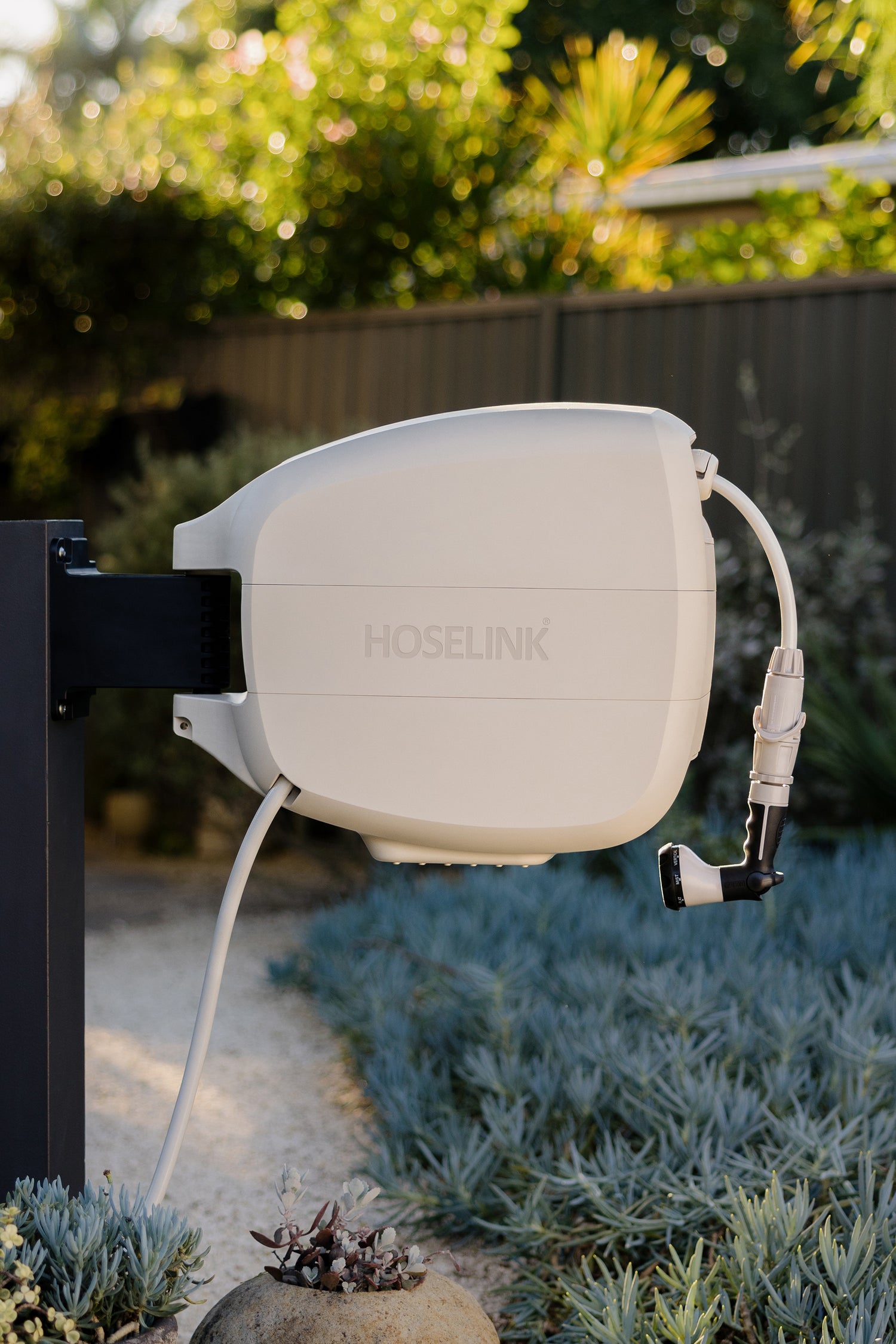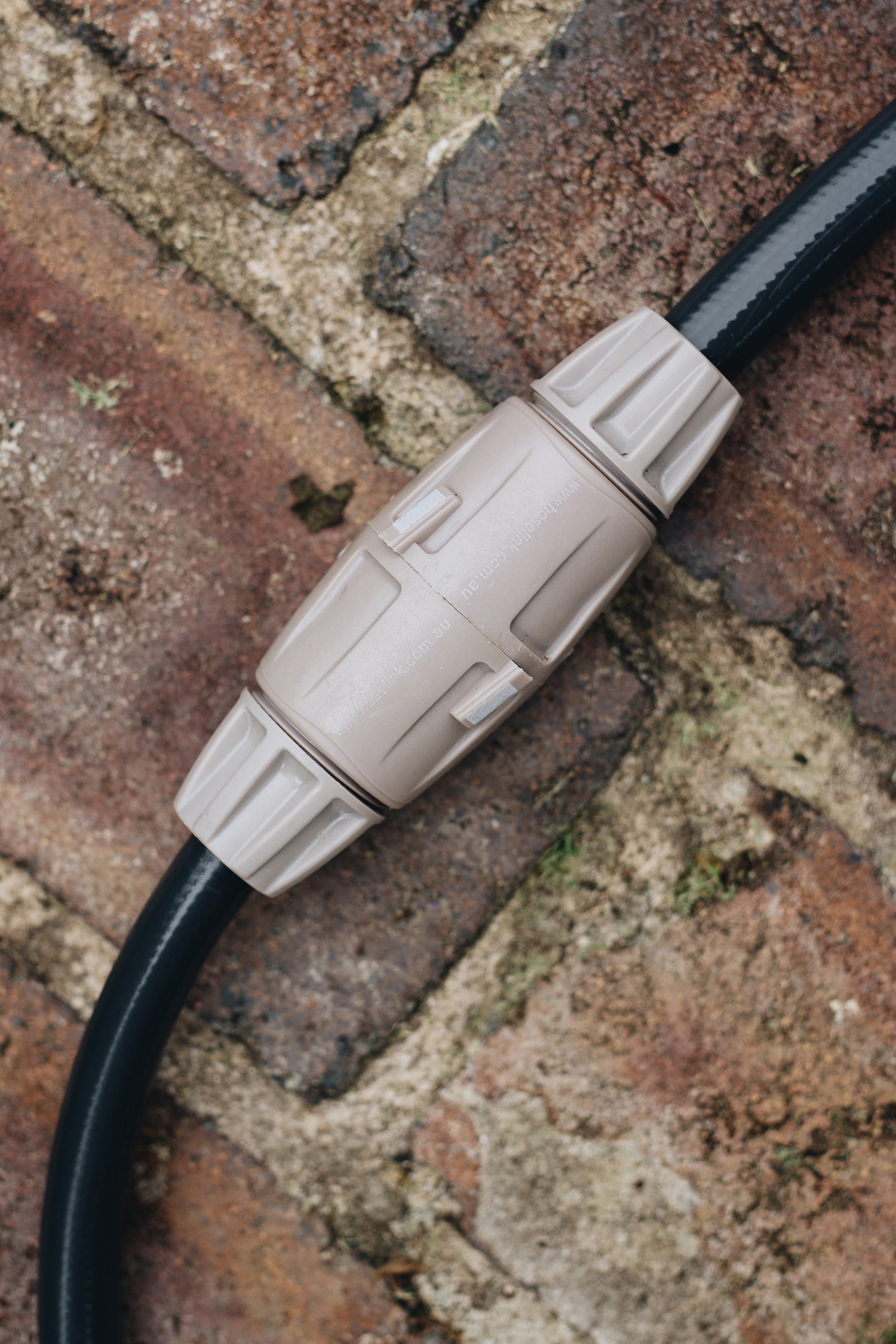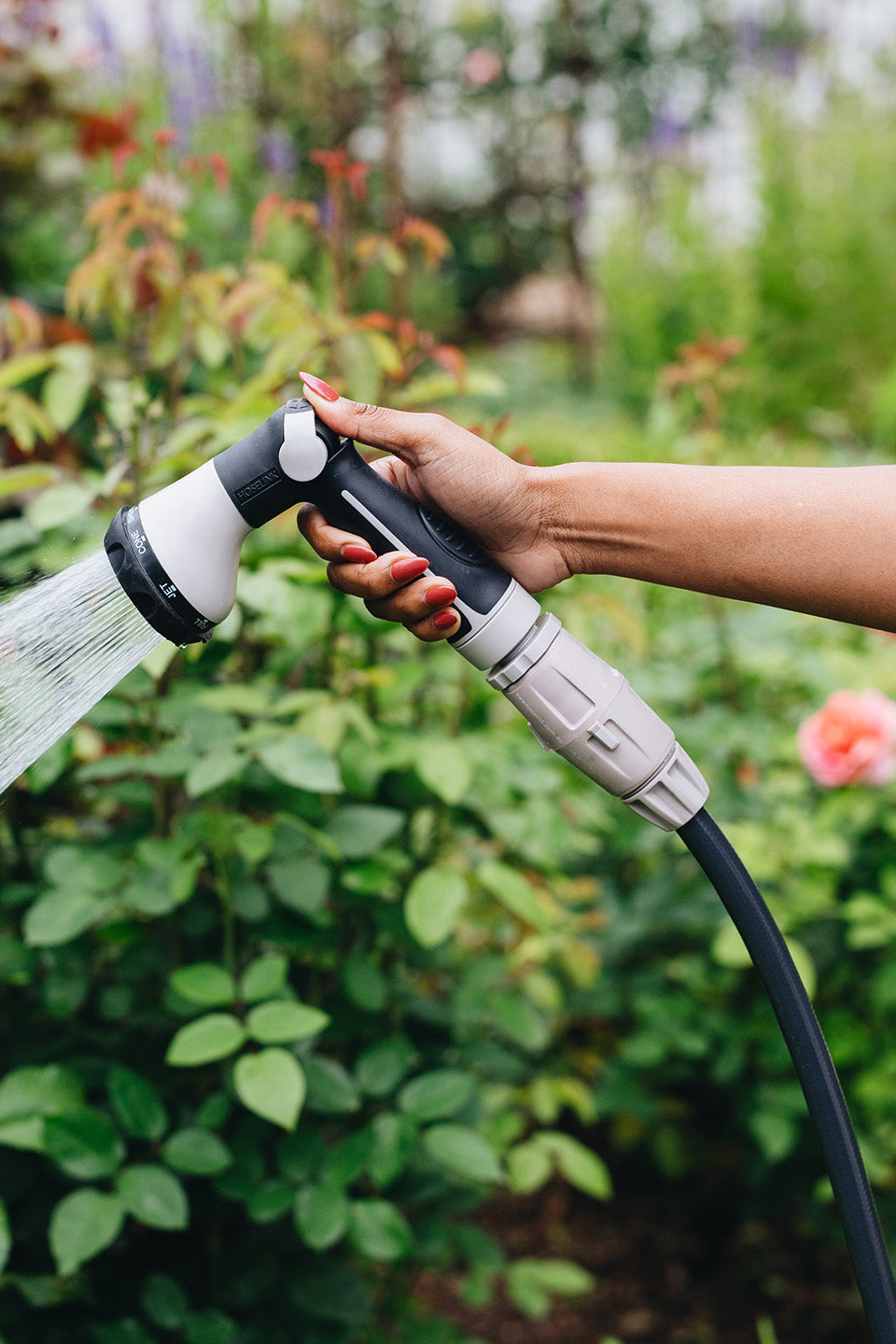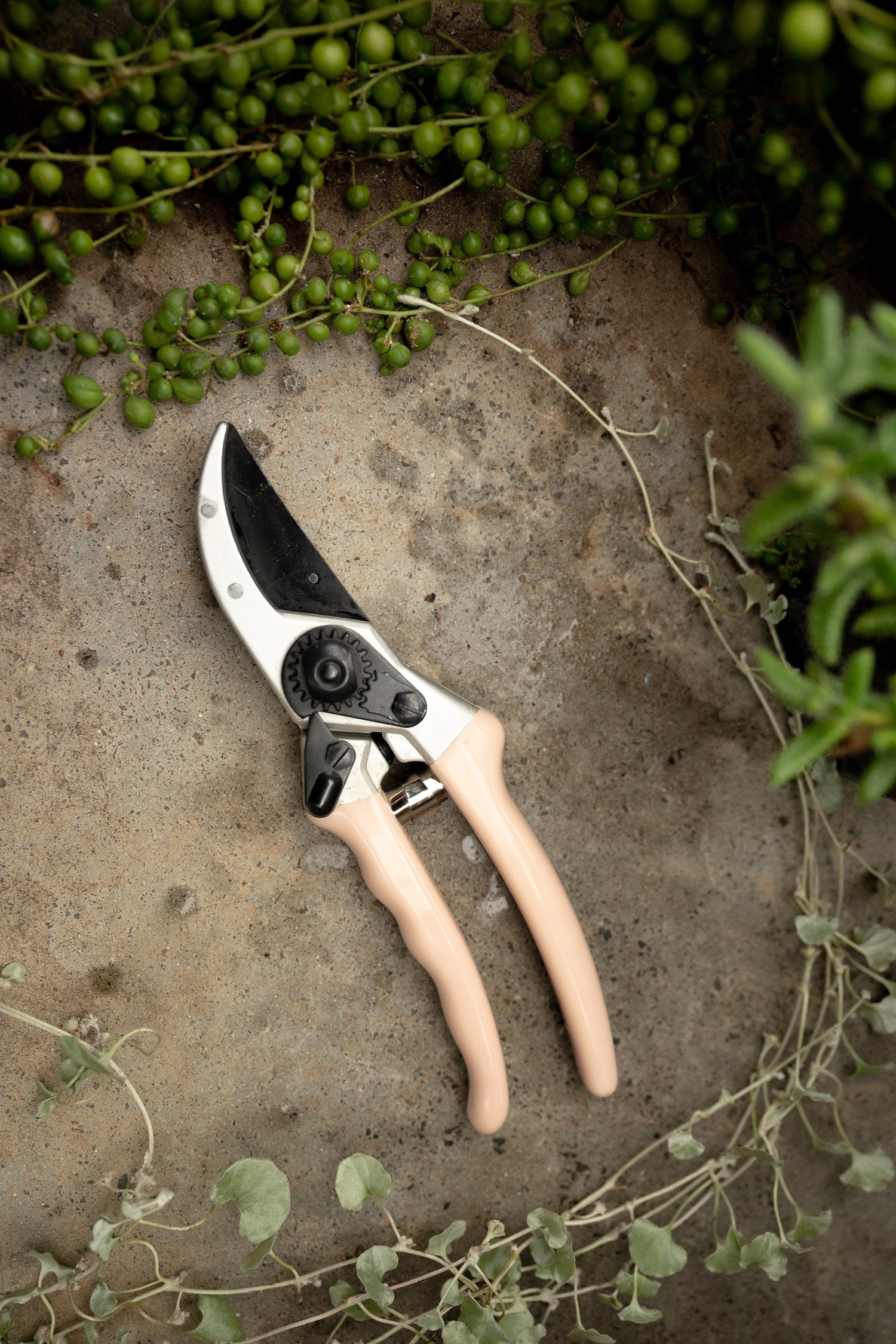Embrace the Winter Harvest
Growing vegetables in winter might seem counterintuitive, but when you love fresh, homegrown produce as much as we do, you’ll do whatever it takes to keep reaping the rewards all year round. After all, why should spring and summer have all the fun?
This blog is here to act as your go-to guide to growing veggies in the colder months – see it as your invitation to glove up, embrace the chill, and discover just how plentiful winter can be. Up for the challenge? Winter, here we come.

Automatic Tap Timer with Rain Sensor

Evolve™ Retractable Hose Reel | Beige
Picking the best veg for your region
Fun fact: Australia’s diverse climate means your winter veggie patch will look different depending on where you live. From frost zones to sunshine coastlines, you’ll need to consider whether what you want to grow can actually go the distance in your area.
For example, in temperate regions, cooler temperatures and the occasional frost make winter ideal for hardy crops like leafy greens, brassicas, and root vegetables. In fact, some crops thrive in or even improve with a light frost – like kale, which becomes sweeter. However, gentler herbs like parsley or chives won’t stand a chance.
Meanwhile, Australia’s subtropical areas enjoy milder winters, making them perfect for growing cool-season veg without the risk of frost and offering relief for delicate greens that would struggle in the hotter months…
Here’s a more in-depth guide to what might fare well in your region.

Temperate regions
Think cooler areas like Victoria, much of New South Wales, parts of South Australia, coastal Western Australia, and Tasmania.
Leafy Greens
-
Spinach
-
Silverbeet
-
Kale
-
Rocket
Root Vegetables
-
Carrots
-
Beetroot
-
Turnips
-
Parsnips
-
Swedes
Brassicas (Cabbage Family)
-
Broccoli
-
Cauliflower
-
Cabbage
Brussels sprouts
Alliums (Onion Family)
-
Garlic
-
Onions
-
Leeks
-
Shallots
Legumes
-
Broad beans
-
Snow peas
-
Sugar snap peas
Subtropical regions
This includes milder areas like South East Queensland (hello Brisbane, Sunshine Coast, and Gold Coast) and Northern New South Wales hotspots like Byron Bay and Lismore.
Leafy Greens
-
Lettuce (especially loose-leaf and butterhead varieties)
-
Spinach
-
Silverbeet
-
Kale
-
Mustard greens
-
Asian greens (e.g., bok choy, tatsoi, pak choy)
Root Vegetables
-
Carrots
-
Beetroot
-
Radishes
-
Turnips
Brassicas (Cabbage Family)
-
Broccoli
-
Cauliflower
-
Cabbage
-
Brussels sprouts
Alliums (Onion Family)
-
Garlic
-
Onions
-
Leeks
Herbs
-
Parsley
-
Chives
-
Thyme
-
Coriander

Prepping your garden for winter growing
Preparing your garden sets the stage for a healthy, productive season – especially since cooler weather can bring both advantages and challenges. Here’s how to give your veggies their best chance to thrive this winter.
1. Clear out summer crops
It’s time for a fresh start. Say goodbye to the remnants of summer favourites like tomato, zucchini and cucumber plants and make way for winter heroes like kale and broccoli. Be sure to remove any diseased plants, as they can contaminate the soil and cause problems for your new crops.
2. Boost your soil health
Give your soil a refresh after the demands of summer. Add compost or aged manure to replenish nutrients and improve structure, and consider adding lime to re-balance the acidity (particularly if you’ve been growing heavy feeding crops like tomatoes).
Top it all off with a layer of mulch, which helps to insulate the soil, regulate temperature, retain moisture, and keep pesky weeds at bay. Need an extra lift? Our range of handy fertilisers will help you get the job done.
3. Catch those rays
With the winter sun sitting lower in the sky and daylight hours in short supply, it’s essential to make the most of sunny stretches while you can. Your garden beds should enjoy at least 4–6 hours of direct sunlight – so you might need to consider moving your veg patch to a sunnier spot (trust us, the payoff is worth the effort!) or pruning overhanging branches and surrounding shrubs to let the light in.
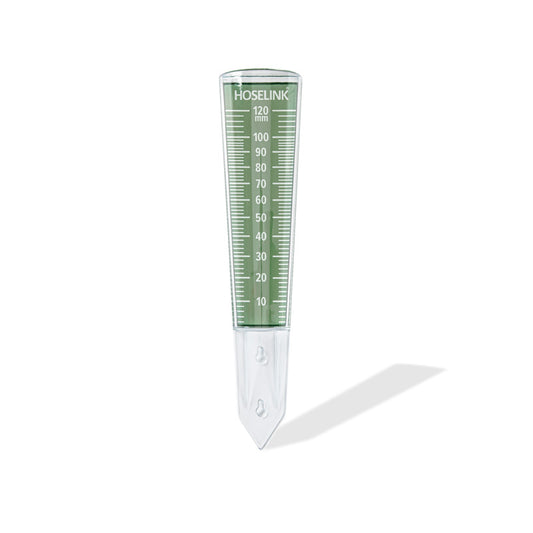
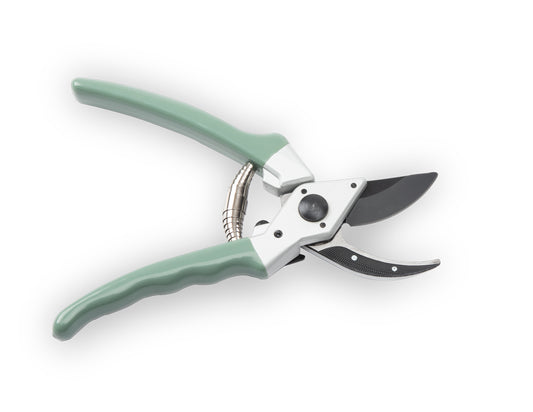
Secateurs 225mm | Sage
Let’s get growing
Once you’ve picked your winter crops and prepped your garden, it’s time to dig in. While winter brings a few unique challenges, don’t forget what you already know about planting vegetables in the warmer months – many of the same rules still apply. Keep in mind each plant’s individual spacing and sunlight needs, and whether you're sowing seeds or transplanting seedlings, make sure you give them a good watering in.
That said, there are a few extra things you can do to give your crops the best start in life and help them thrive through the colder months.
1. Timing is everything
Planning ahead makes all the difference when it comes to successful veggie growing in winter, especially given how some crops have very specific growing windows. Remember, shorter daylight hours mean plants grow more slowly (even if temperatures are ideal), so many winter vegetables will need an early start to make the most of the season.
-
Slow growers like garlic, broccoli, cauliflower and Brussels sprouts require several months of cool weather to reach harvest, so getting them in the ground early in the season is essential.
-
Even slower growers, like onions, are best planted from late autumn to early winter for a late spring or summer harvest.
-
Meanwhile, fast-growers like radishes, lettuce, and Asian greens mature quickly – often within 4–6 weeks – making them ideal for succession planting. Stagger plantings every 2–3 weeks to keep a steady harvest going throughout winter. You can make life even easier for yourself by signposting what you’ve planted (and when) with our new recycled plant labels!
Don’t wait too long to plant, or you’ll run out of growing time before spring heat kicks in. Top tip: if you are starting late in the season, use seedlings instead of seeds to give your crops a head start. On that note…
2. Protect young seedlings
Young seedlings are particularly vulnerable to cold temperatures, frost, and harsh winds, which can stunt their growth or even kill them outright. To give your crops the best chance of thriving, it’s important to provide some extra protection during those chilly winter months.
-
One easy and effective method is to use cloches – small, transparent covers that act like mini greenhouses and trap warmth around individual plants. Buy them readymade or create your own from clear plastic containers or recycled bottles with the bottoms cut off. (If you’re making your own, remember to pierce holes in the plastic – even in cooler weather, direct sunlight can warm up the air inside a cloche quickly, trapping moisture and leading to fungal diseases like mould or mildew.)
-
For larger garden beds or rows of seedlings, mini greenhouses or cold frames can create a microclimate that maintains warmer temperatures and protects from harsh weather.
-
If you live in a frost-prone area, investing in row covers or frost cloths is a smart move. These lightweight fabrics cover entire beds, providing insulation against frost while allowing air, light, and water to pass through. They’re especially handy during sudden cold snaps and can be easily removed during warmer parts of the day to avoid overheating.
By taking these precautionary measures, you’ll not only help your seedlings stay healthy and strong, but you’ll also protect against pesky bugs like cabbage moths, snails and slugs, which are still surprisingly active during winter.

![]() 3. Water wisely
3. Water wisely
Watering your garden correctly is crucial to keeping your plants healthy without encouraging disease, which can arise because of excess moisture and poor air circulation in cool, damp conditions. Here’s how to keep your crops hydrated and healthy through winter, without putting them at risk:
-
Because cooler temperatures slow down evaporation, your soil will stay moist for longer than in warmer months. This means you should water less frequently but more deeply (giving your plants a good, thorough soak less often, rather than light, frequent sprinklings) to encourage roots to grow strong and reach deeper into the soil. For an easy way to soak, try our Root Waterer.
-
The best time to water is early morning. This allows plants to absorb moisture during the day and gives the soil surface time to dry before nightfall.
-
Why should you avoid watering in the evening or late afternoon? Lingering moisture overnight can create ideal conditions for fungal diseases like root rot and mildew. If timing isn’t your strong suit, don’t worry, our irrigation range will help keep you on schedule.
-
Check the moisture level regularly by feeling the soil with your fingers, or with our handy Rain Gauge, and only water when the top few centimetres feel dry to the touch. Overwatering can be just as harmful as underwatering, especially in winter when plants use less water and excess moisture can lead to soggy soil.
-
If your garden is exposed to strong winter winds, which can dry out soil faster, you might need to adjust your watering schedule accordingly. Mulching your beds can also help to retain moisture and reduce the need for frequent watering.
By adopting a thoughtful, measured watering routine, you’ll help your winter vegetables stay strong, healthy, and disease-free all season long.

Harvest time
Congratulations – you’ve made it through winter! After months of dedication and careful tending, it’s time to enjoy the fruits (or in this case, veggies) of your labour. Just one last step stands between you and your hard-earned, homegrown produce – mindfully harvesting your winter crops for the best results possible.
1. Pick the right time
Harvesting your produce regularly prevents it from becoming tough, overripe, bitter, or attracting pests. Most vegetables can be picked when they’re mature, but still tender – for example, root veggies like carrots and beets should be pulled once they reach a good size but before they start to feel woody. For leafy greens like spinach and lettuce, pick the leaves regularly throughout the season to encourage new growth.
2. Handle with care
Be extra gentle to avoid bruising delicate greens and herbs. You can use Hoselink’s handy snippers, secateurs or shears to make precise cuts without damaging the plant. For root vegetables, gently loosen the soil with our garden fork or weeders before pulling to prevent breaking the roots.
3. Harvest in the morning
A little trade secret: for the best flavour and texture, pick your veggies early in the day when they’re crisp and full of moisture. As the day warms up, vegetables (especially leafy greens) can dry out and become limp, resulting in a duller flavour.
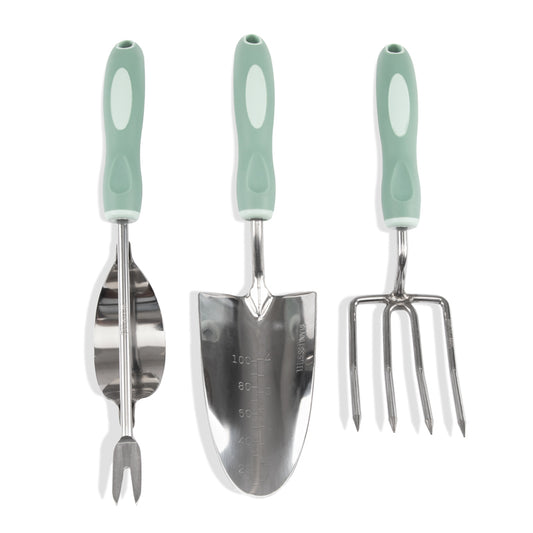
Garden Fork, Trowel and Weeder Set
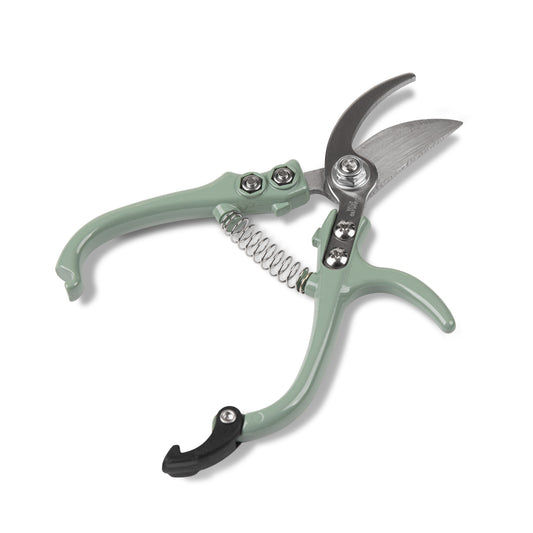
Handy Snippers
Consider winter conquered
If you think growing crops in spring and summer is rewarding, just wait until you turn your veggie patch into a flourishing winter wonderland. Not only does it make the most of your garden during the quiet bloom season, but all that fresh, homegrown produce will help to keep common colds and winter flu at bay – what’s not to love? But if braving the elements still isn’t your thing, don’t worry. Remember – a windowsill herb garden is never out of the question.





